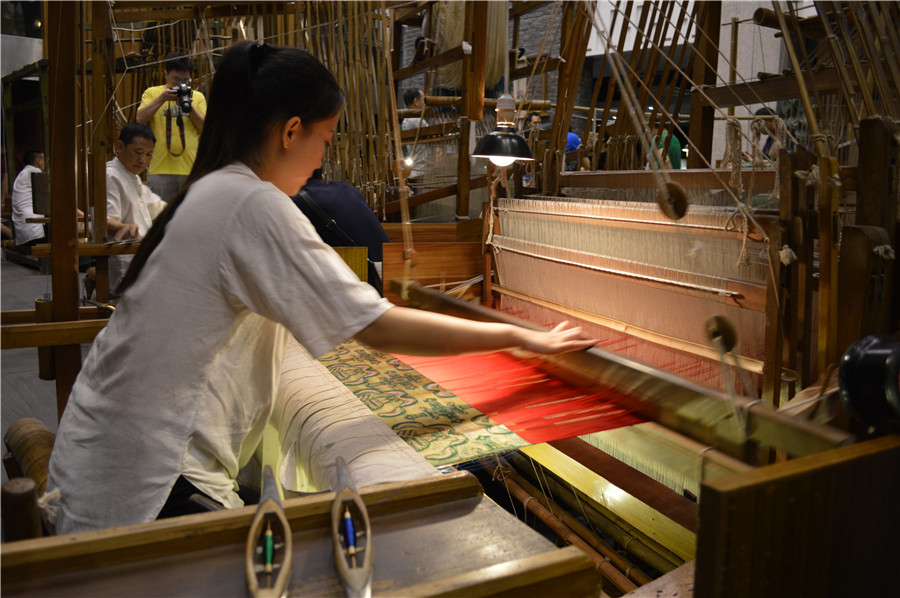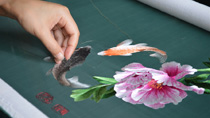Stunning Shu brocade and embroidery techniques live on in museum
 0 Comment(s)
0 Comment(s) Print
Print E-mail chinadaily.com.cn, August 4, 2015
E-mail chinadaily.com.cn, August 4, 2015
| A female apprentice works on a Shu Brocade patterning tower loom in Chengdu Shu Brocade and Embroidery Museum in Sichuan province, Aug 13, 2015. The complicated and time-consuming process produces exquisite handmade Shu Brocades.[Photo by Jiang Wanjuan/chinadaily.com.cn] |
Since ancient times, Sichuan has been well known for brocade and embroidery.
The technique of Shu embroidery began to take shape in the Han Dynasty (206 BC-AD 220) and was one of the top four Chinese embroidery schools, along with Su Embroidery in Jiangsu, Xiang Embroidery in Hunan and Yue Embroidery in Guangdong. The most well-known among the four, Shu Embroidery has 120 kinds of stitches, and features fluid lines and bright colors, which look natural and vivid.
A thriving art in the Han Dynasty, Shu Brocade reached its apex in the Tang Dynasty (AD 618-907) and was the specialty of ancient Chengdu. The technique of Shu Brocade weaving was listed as China’s national-level intangible cultural heritage in 2006. It takes two people working at the same time on a traditional Shu Brocade patterning tower loom to produce the brocade.
The Chengdu Shu Brocade and Embroidery Museum opened in 2009 and is composed of three parts: the exhibition of Shu brocade and embroidery, artworks for sale, and a workshop where visitors can get up close with craftsmen.






Go to Forum >>0 Comment(s)